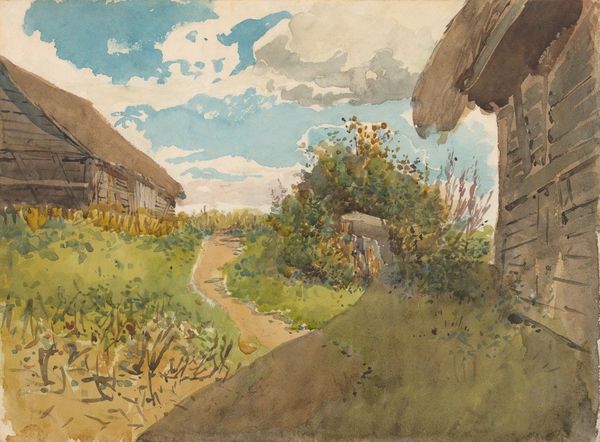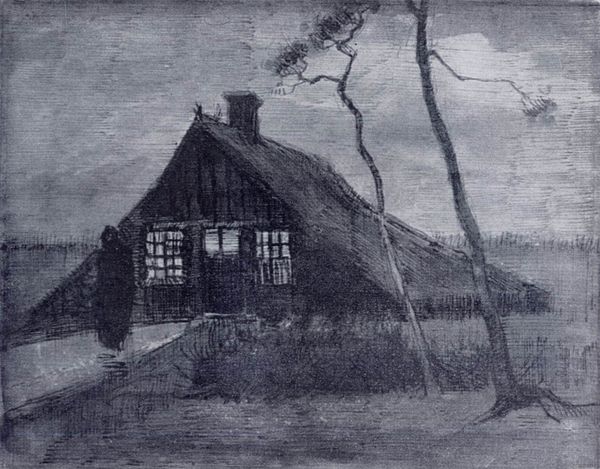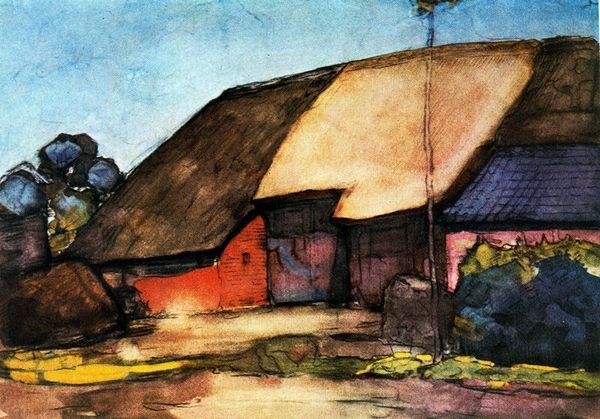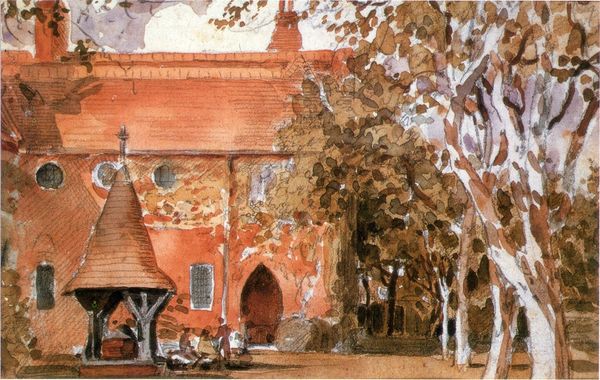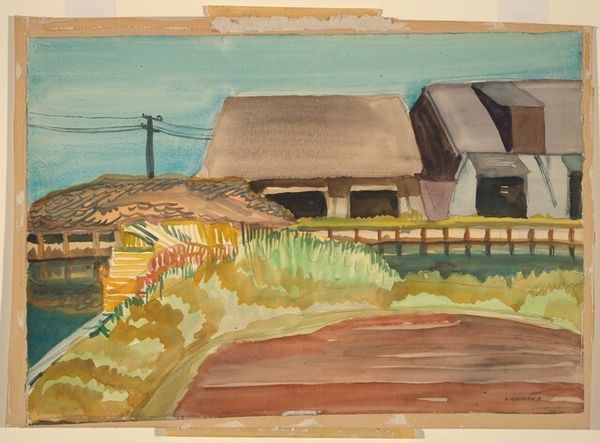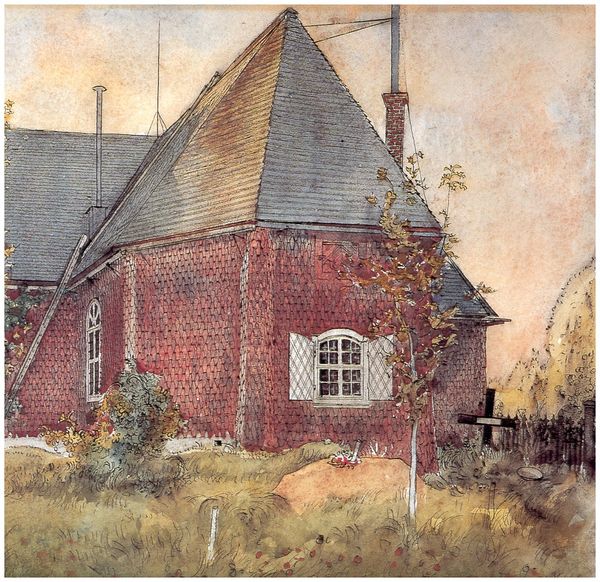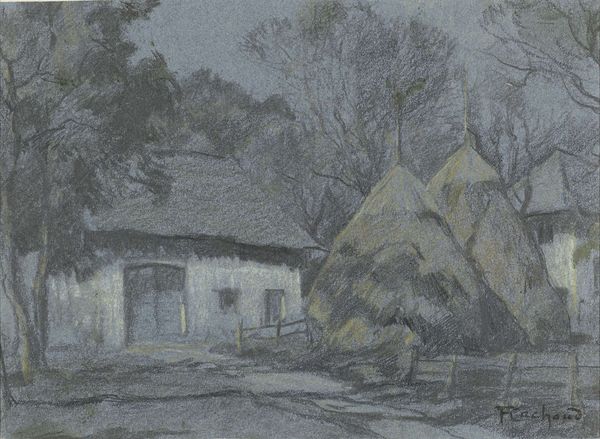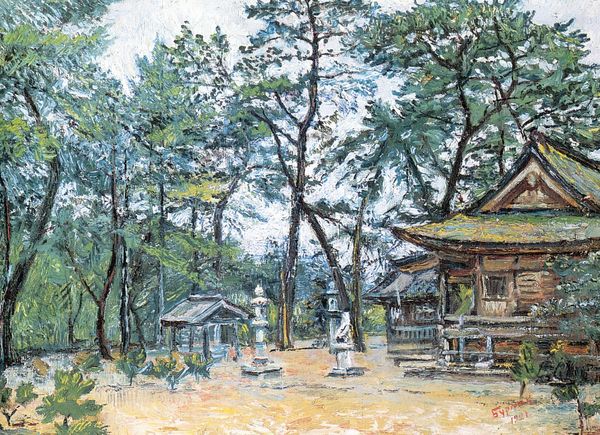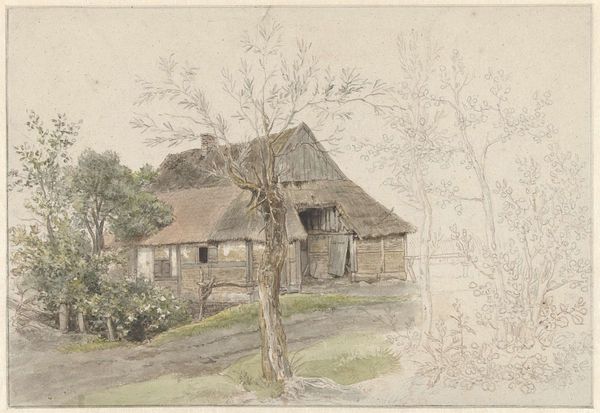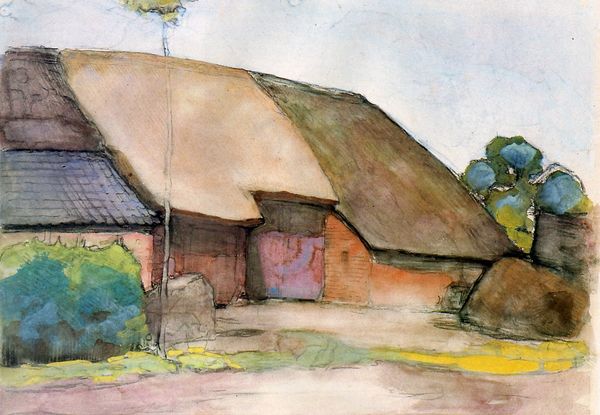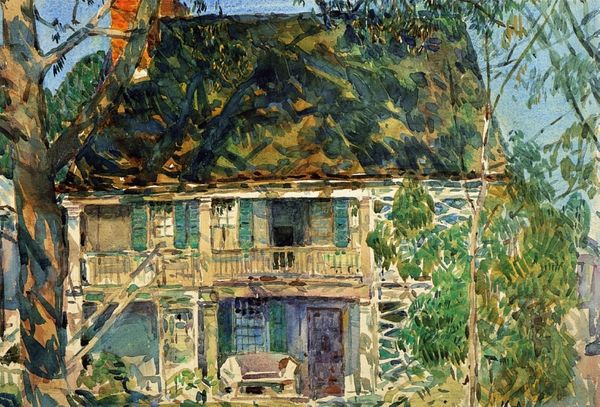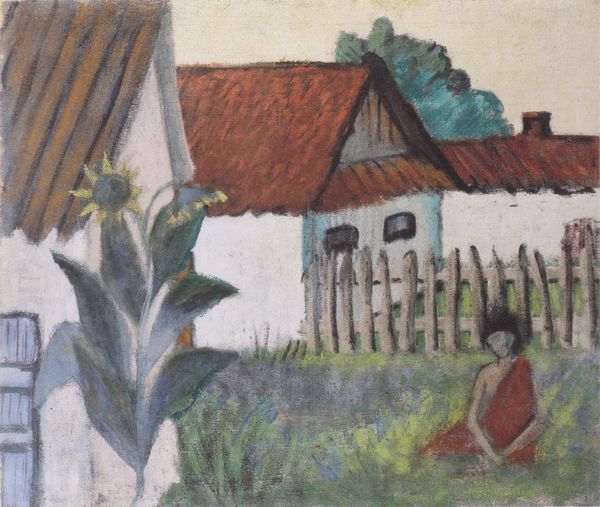
painting, oil-paint
#
painting
#
oil-paint
#
landscape
#
oil painting
#
russian-avant-garde
#
watercolor
#
realism
Copyright: Public domain
Editor: Arkady Rylov’s “Red House. Rylov’s Workshop on the Banks of the Volga,” created around 1910, presents us with a vivid landscape rendered in oil. There's almost a rustic quality to the materials he depicts. How would you interpret Rylov's choice of medium and subject in this painting? Curator: I find it compelling to examine Rylov's approach to this landscape through the lens of materiality and labor. Consider the very act of applying oil paint to canvas – the physical process, the cost of the materials, the access he has to such resources. Who historically has been privileged enough to create landscape paintings and what stories do they reflect? The red house, the presumed "workshop," highlights the potential site of artistic production itself, almost in conversation with its own making. What kind of relationship do you think is established between the labor, the structure, and its representation through the oil paint? Editor: That's a fantastic point, framing the house not just as a structure, but as a site of labor and production. I wonder if the vibrant red color is intentional, perhaps to emphasize the industry and effort involved. Curator: Precisely. The pigmentation itself is a material with a specific origin and social context. What raw materials were used to get this particular red and how were those materials accessed? Who was part of its distribution and manufacture? Considering those questions gives us a deeper understanding of Rylov's work and its place in society. It’s not just a pretty picture, it is also the convergence of numerous processes! Editor: That makes me think about how the painting almost obscures the workshop. Do you think he meant to hide something, or complicate its consumption? Curator: Obscuring, or maybe framing a particular view for a particular consumer? The seemingly "natural" framing of the workshop by the trees makes me wonder what narrative Rylov constructs around artistic production and its reception. We also must keep in mind the social context of art-making at that time! Editor: I've definitely learned a new way to look at landscapes, thinking beyond just the aesthetic appeal. Thank you. Curator: My pleasure. By looking at materiality and modes of production, even a seemingly straightforward painting of a house on a river opens up to deeper layers of understanding about the complex relationship between art, labor, and society.
Comments
No comments
Be the first to comment and join the conversation on the ultimate creative platform.
